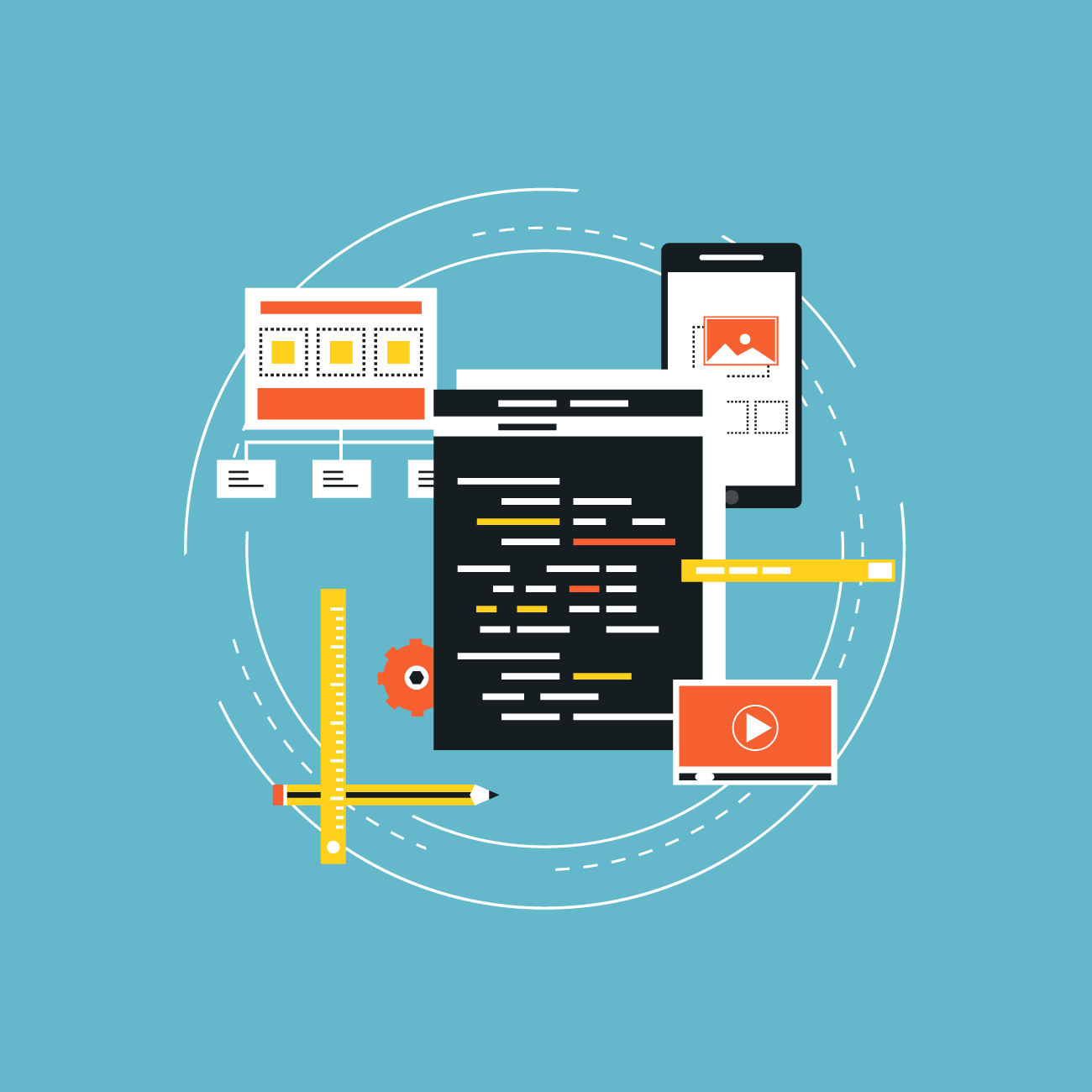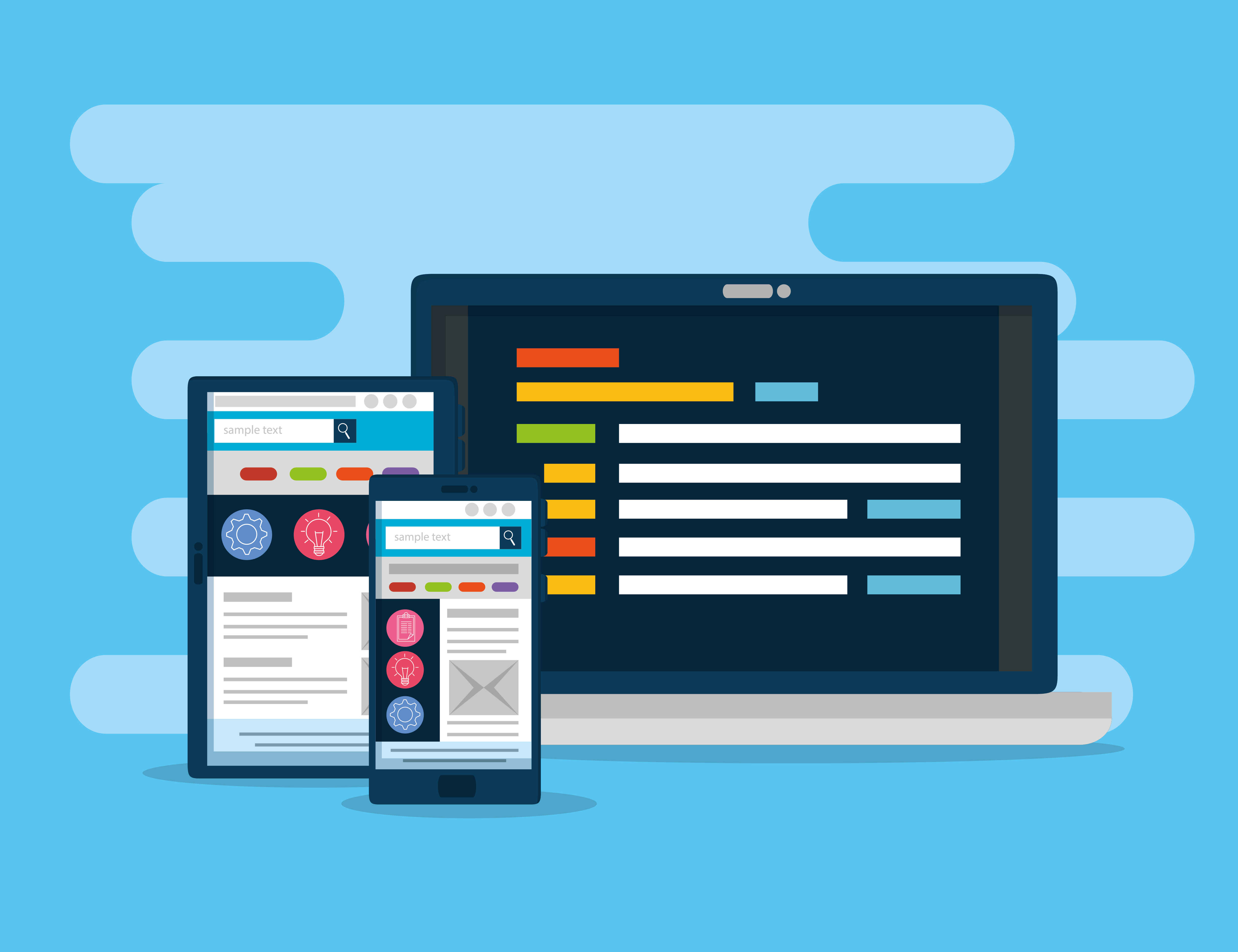Development of web applications is the process of creating programs that run in a web browser. These apps can do things like shopping or socializing, and you can use them from any device with an internet connection. The web app development process includes designing how the app looks, writing the code that makes it work, and testing it to fix any bugs. Developers also make sure the app is easy to use and works well on different devices and browsers. It's like building a tool that works anytime, anywhere, without needing to install anything.

The Complete Web App Development Process: 8 Critical Stages
Web app development service takes an idea and turns it into a fully functioning application. If you've ever wondered how websites or apps like Facebook, Instagram, or your favorite shopping platform came to life, it all starts with a clear web application development process.
1. Planning and Research
Before starting the actual work, it's essential to know exactly what you want the app to do. This first step is all about gathering information and setting clear goals. What problem is the app solving? Who will use it? What features should it include? The answers to these questions guide the entire project.
During this step of developing an app, developers, designers, and other team members work closely with the client to define the app's purpose. They research similar apps in the market, look at what works, and decide how to make this app stand out. Once all the information is gathered, the project team agrees on what the app will do and how it should look.
2. Designing the User Interface (UI)
Once the planning is done, the next step is designing the app's interface. This is what users will see and interact with when they use the app. The design stage is important because it shapes how the user will experience the app.
The UI design focuses on making the app easy to use and visually appealing. Designers work on the layout, colors, buttons, and fonts. They make sure everything is arranged in a way that feels natural and intuitive. The web application development process includes creating wireframes (basic sketches of the app) and prototypes (a working version of the app that shows how it might function). Good UI design makes sure users can easily find what they need and navigate through the app without getting frustrated.
3. Choosing the Right Technology Stack
Choosing the right technology stack is the next critical app development process step. A technology stack refers to the combination of programming languages, tools, and frameworks used to build the web app. This decision will depend on what features the app needs, the number of users, and the devices the app will support.
For example, for a simple web app, developers might choose a combination of HTML, CSS, and JavaScript. For more complex apps, they might go with a framework like React, Angular, or Vue.js for the front end and Node.js or Ruby on Rails for the back end. Choosing the right tools helps make sure the app runs smoothly, is secure, and can scale as the number of users grows.
4. Developing the Frontend and Backend
Now, the actual coding - the main app development phase begins. In this stage, developers start writing the code that will bring the app to life.
- Frontend Development: The frontend is the part of the app that users interact with. It includes everything from the buttons you click to the text you read. Frontend developers use languages like HTML, CSS, and JavaScript to create the layout, design, and functionality that users see.
- Backend Development: The backend is the server side of the app. It’s responsible for managing the data and ensuring everything works behind the scenes. Backend developers write code to handle user requests, store information in a database, and perform any other tasks that the app needs to function. They use languages like Python, Ruby, or PHP and frameworks like Django or Express.js.

5. Testing
After the coding stage of app development is done, it's time to test the app. This step is necessary to catch any bugs or problems that could affect how the app works. Testing ensures that the app is stable and that all the features function as intended. There are different types of testing. For example:
- Unit testing checks individual parts of the app to make sure they’re working correctly.
- Integration testing ensures that different parts of the app work together.
- User acceptance testing involves real people testing the app to make sure it’s easy to use and meets their expectations.
Testing is a key step to making sure that the app doesn’t have any surprises once it’s released to users.
6. Deployment
Once the app is tested and everything is working, it’s time to make it available to the public. This is called deployment. During this stage, developers take the app from a development environment (where it’s been built and tested) to a live production environment (where users can access it).
This step also includes setting up servers and databases and ensuring everything is connected and working properly. Developers will also set up tools to monitor the app’s performance and fix any issues that might come up after the launch.
7. Maintenance and Updates
Launching the app doesn’t mean the work is over. After deployment, it’s important to keep an eye on the app and address any issues that come up. This stage is called maintenance. During this phase, the team monitors how the app is performing and makes updates to improve the user experience or add new features. This can include fixing bugs, updating the app to work with new devices or browsers, or adding new functionality based on user feedback. Regular updates and maintenance help the app stay relevant and useful for its users.
8. Marketing and Feedback Collection
The last step in the web application development process is getting the app into the hands of users. This is where marketing comes in. Developers work with marketing teams to create campaigns that promote the app and make people aware of its features. This can include online ads, social media posts, email campaigns, or even word-of-mouth promotion.
Once the app is being used, collecting feedback is crucial. This web application development life cycle helps the team understand how users are interacting with the app, what they like, and what could be improved. Feedback is often collected through surveys, reviews, or by analyzing how users are using the app. This information can lead to further improvements and new features in future versions.

Key Factors for Building a Successful Web Application
When it comes to web development, creating a successful web application requires much more than just writing code. A great web app doesn’t just look good; it works well, meets the needs of users, and provides a smooth experience. But how do you make sure your application development plan is successful?
User-Centric Design
The first thing you need to consider when building a web app is how users will interact with it. User-centric design focuses on creating an app that is simple, intuitive, and easy to use. If the app is too complicated or hard to navigate, users will quickly become frustrated and leave.
It’s important to prioritize the user’s experience by making sure everything is easy to find and use. Clear navigation, readable fonts, and logical layouts can make a huge difference in how users interact with the app. User feedback during the design phase is also key. Regularly testing with real people helps refine the design and make sure it meets their needs.
Performance and Speed
Another factor that determines the success of a web application is its performance. Users expect fast loading times and smooth interactions. If an app is slow or takes too long to load, users will likely abandon it. Optimizing the performance of your app is important from the very beginning. This includes reducing the size of images, optimizing code, and using efficient frameworks and tools. You also want to make sure that the app performs well on all devices, whether it’s a smartphone, tablet, or desktop. A smooth and quick experience keeps users engaged and happy.
Mobile Responsiveness
The majority of people browse web apps on their phones. This implies that your software must function and look fantastic on mobile devices. A mobile-responsive design adapts to various screen sizes, guaranteeing that the application runs correctly on desktop computers, smartphones, and tablets. Changing the size of text or pictures is only one aspect of responsive design. The goal is to ensure that every interactive component functions properly on smaller displays. The layout should be flexible enough to adjust to multiple screen sizes without breaking, and buttons should be large enough to tap with ease. Regardless of the device a user uses, a responsive web application ensures a positive experience.

Security
When developing a website app, security should always come first. Users want their personal information to be secure due to growing worries about internet privacy and data protection. A web app that doesn’t prioritize security can lead to data breaches, loss of trust, and even legal issues.
Always utilize secure coding techniques and encrypt important data to keep your users safe. To stop unwanted access, use robust authentication techniques like two-factor authentication (2FA). It's also critical to regularly update security. Keeping current with the most recent security patches helps shield your app and users from possible dangers.
Scalability
Scalability refers to a web app’s ability to handle growth, whether that means more users, more data, or more traffic. A web app might be fine with a small number of users, but as it grows, it must be able to handle increased demand without slowing down or crashing.
During the website development application process, it’s important to think about how the app can scale in the future. Choose technologies that allow the app to grow, and design the backend so that it can handle additional load when needed. Planning for scalability ensures that your app can grow alongside its user base and maintain good performance.
Compatibility Across Browsers
Not all users access web applications through the same browser. Some may use Chrome, while others prefer Firefox, Safari, or Edge. Because of this, your web app should work smoothly across different browsers. Browser compatibility is an important part of testing. Developers should test the app on a variety of browsers to make sure it looks and behaves the same way across all of them. Ignoring compatibility can lead to issues where certain features don’t work for some users, which can lead to frustration and lost users.
Clean and Well-Structured Code
A successful web app is built on clean and organized code. This is important for the app’s current functionality. Also, one more crucial thing is future updates and maintenance. Clean code is easier to read, understand, and modify when needed.
When developers write well-organized code, they reduce the chance of errors and bugs. Because it's simpler to maintain and expand upon, it also speeds up the website development application process. It will be more difficult to fix problems and add new features later on if the code is disorganized or crowded.
Regular Updates and Maintenance
When your web application goes live, the work doesn't end. You must update and maintain it on a regular basis to keep it safe and operating correctly. This includes resolving problems, adding new features, and modifying in response to user input. Your app may stop functioning or become obsolete if you don't update it. Monitoring the app's performance and identifying areas for improvement is also crucial. Users are kept satisfied and encouraged to continue using the app with regular upgrades.
Building a good web app isn’t just about writing code. It’s about paying attention to every part of the process, from design to launch. By focusing on how users feel when they use the app, how fast it works, and how easy it is to use, you can create an app that people enjoy. A great app works well on all devices and browsers. By following simple steps, the website development application process can make web apps that not only meet users’ needs but also stand out.
Contents
1. The Complete Web App Development Process: 8 Critical Stages
2. 1. Planning and Research
3. 2. Designing the User Interface (UI)
4. 3. Choosing the Right Technology Stack
5. 4. Developing the Frontend and Backend
6. 5. Testing
7. 6. Deployment
8. 7. Maintenance and Updates
9. 8. Marketing and Feedback Collection
10. Key Factors for Building a Successful Web Application
11. - User-Centric Design
12. - Performance and Speed
13. - Mobile Responsiveness
14. - Security
15. - Scalability
16. - Compatibility Across Browsers
17. - Clean and Well-Structured Code
18. - Regular Updates and Maintenance
Back to the top
